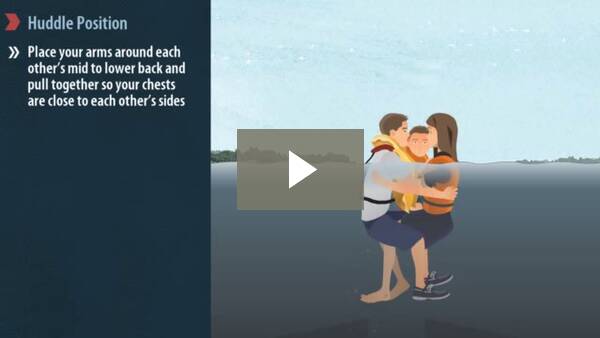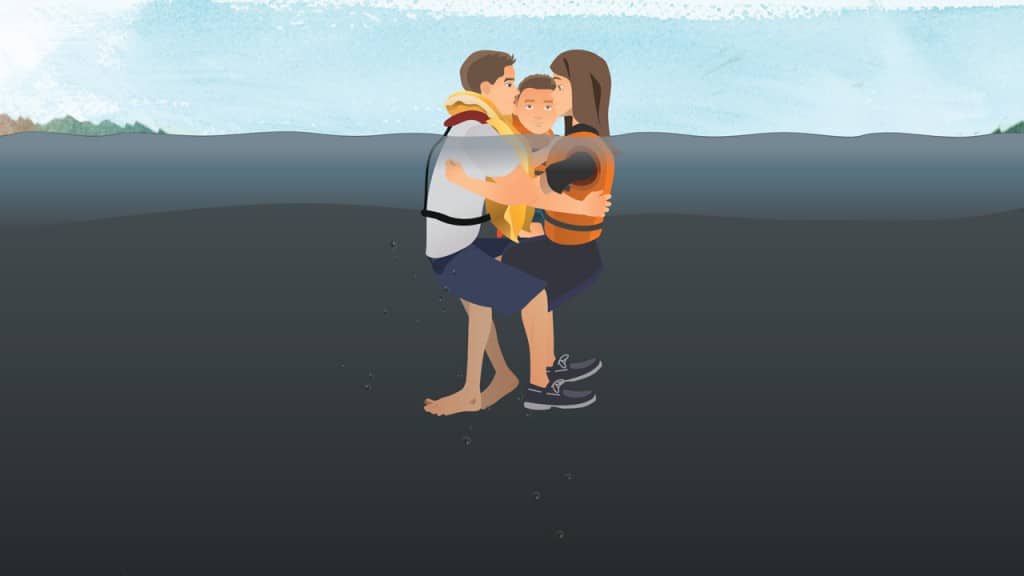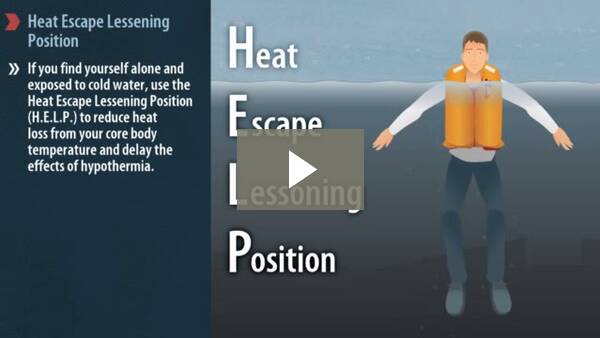Surviving Cold Water Immersion
If you find yourself in cold water, do the following to increase your survival time:
Immediate Action
Step 1) Assess the situation:
- Is everyone wearing a PFD or life jacket?
- Can you get to shore or safety?
- Are there any boaters who can assist you?
- Are you able to signal or call for help?
Step 2) If you are within 50 m of shore and are able to swim to safety you should do so.
Step 3) If you are injured, there is help close by, or you are further than 50 m from shore, you should stay where you are.
Step 4) If you are alone and close to a floating object, you should climb onto the object to remove yourself from the cold water and save energy. However, you should only do so if you are able to get most of your body out of and above the water.
Step 5) Immediately signal or call for help if you are able to do so.
Huddle Position
If you and your passengers find yourself exposed to cold water, and are unable to swim to shore or climb onto a floating object, you should assume the huddle position to increase your survival time:
- Place your arms around each other’s mid to lower back and pull together so your chests are close to each other’s sides
- Intertwine your legs
- Place any children in the middle of the huddle
- Keep unnecessary movements to a minimum in order to conserve energy
Heat Escape Lessening Position (H.E.L.P.)
If you find yourself alone and exposed to cold water, use the Heat Escape Lessening Position (H.E.L.P.) to reduce heat loss from your core body temperature and delay the effects of hypothermia.
H.E.L.P is performed as follows:
1) Cross your arms tightly against your chest.
2) Draw your knees up and against your chest.
3) Keep your head and face out of the water.





